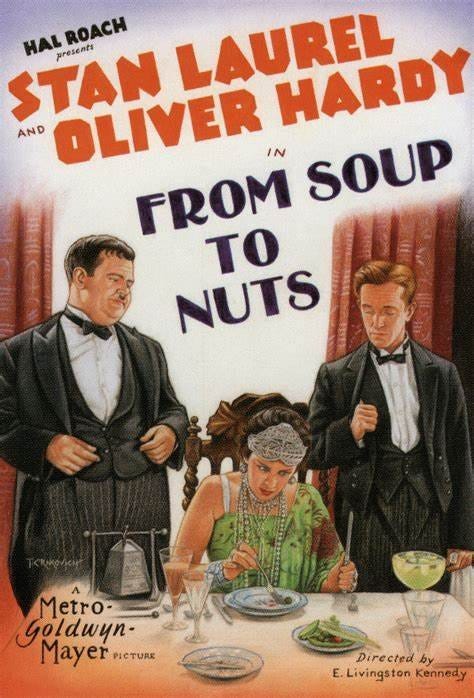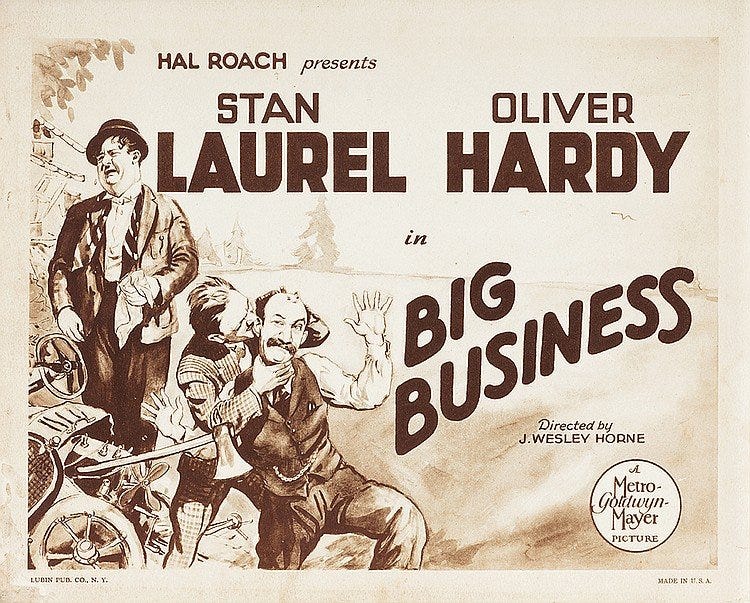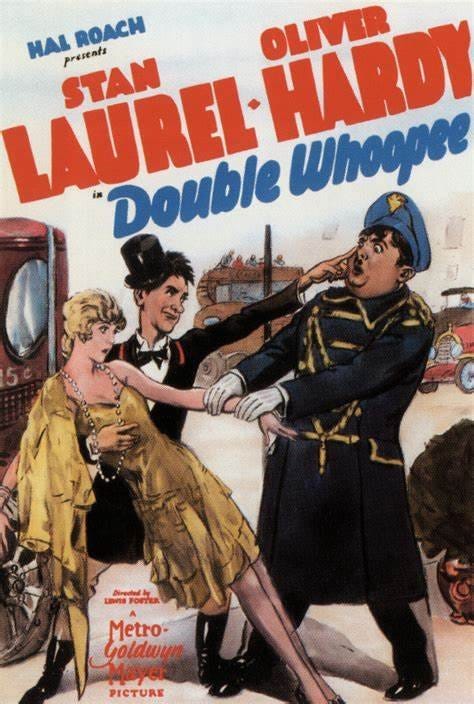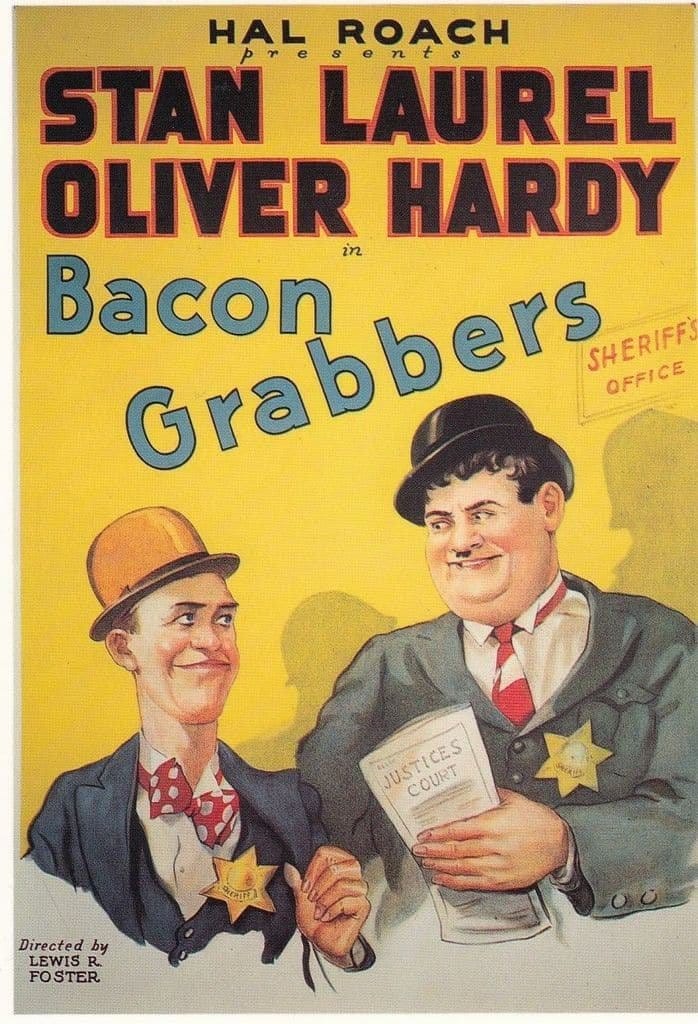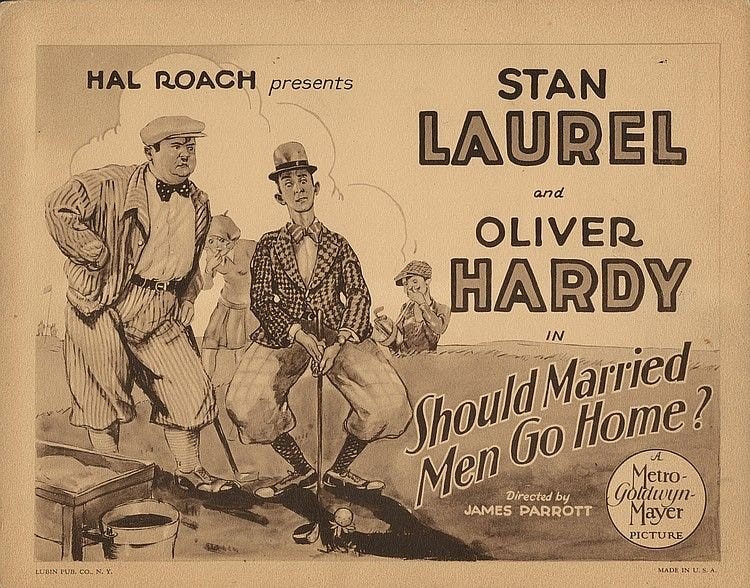The Silent Comedies Of Laurel And Hardy
Critics in the day didn't like Laurel and Hardy shorts, today these are considered some of the best silent comedies.
From Soup to Nuts is a silent short subject directed by E. Livingston Kennedy starring comedy duo Laurel and Hardy. It was released on March 24, 1928, by Metro-Goldwyn-Mayer. "From soup to nuts" is also a common phrase referring to the courses of a meal; having a soup course before the salad and a nut plate after dessert indicates "the complete treatment," above and beyond the ordinary.
Big Business is a 1929 silent Laurel and Hardy comedy short subject directed by James W. Horne and supervised by Leo McCarey from a McCarey (uncredited) and H. M. Walker script. The film, largely about tit-for-tat vandalism between Laurel and Hardy as Christmas tree salesmen and the man who rejects them, was deemed culturally significant and entered into the National Film Registry in 1992.
Double Whoopee is a 1929 Hal Roach Studios silent short comedy starring Laurel and Hardy. It was shot during February 1929 and released by Metro-Goldwyn-Mayer on May 18. Jean Harlow made her debut in this film and instantly became a star.
Bacon Grabbers has Laurel and Hardy employed as repossession men for the local sheriff's office. They are given the challenging task of repossessing a radio owned by Collis P. Kennedy, described as a tough customer, who has not paid any installments since 1921. Jean Harlow appears at the end for about 30 seconds.
Should Married Men Go Home? was filmed in March and May 1928. It was the first Hal Roach film to bill Laurel and Hardy as a team. Previous appearances together were billed under the Roach "All-Star Comedy" banner. On-location footage has recently surfaced on YouTube. The film's working title was Follow Through.
8-foot-9 actor John Aasen appears as "Very Tall Golfer."
Audiences loved them, critics hated them, today? Everyone loves Laurel and Hardy. Here’s a documentary on the duo:
Behind the paywall: Unknown Chaplin - Episode 1 (My Happiest Years)
The first episode in a 3-part documentary series. Using in part rare out-take footage, the film-making methods and techniques of Charles Chaplin are explored. Created by Kevin Brownlow and David Gill.
Keep reading with a 7-day free trial
Subscribe to Classics Of The Silent Screen to keep reading this post and get 7 days of free access to the full post archives.




